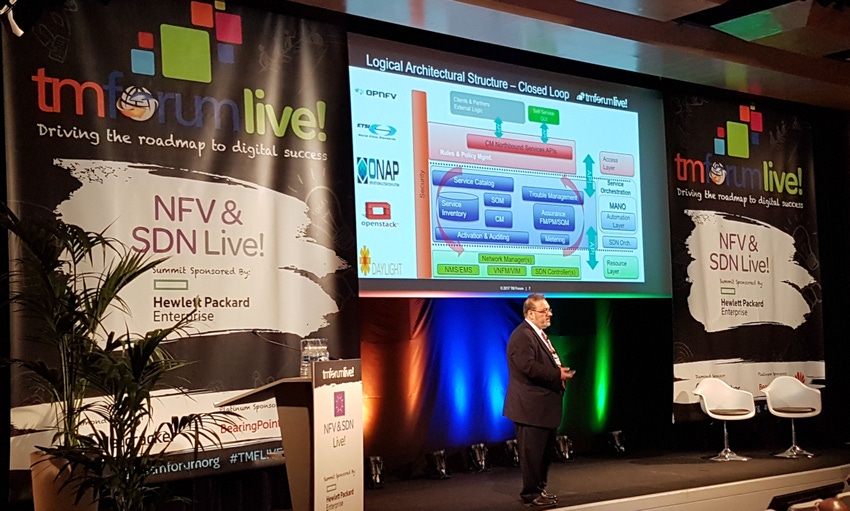On the opening morning of the TM Forum Live 2017 event a succession of operators and vendors lined up to give their take on how virtualization is progressing.
May 15, 2017

On the opening morning of the TM Forum Live 2017 event a succession of operators and vendors lined up to give their take on how virtualization is progressing.
The ultimate conclusion was ‘it’s complicated’, as illustrated by prevalence of the all too familiar ‘loads of boxes inside bigger boxes’ software slides. Everyone agrees on what a great idea telecoms virtualization is, and the need for telcos to at least get closer to so-called OTTs in terms of speed, agility, etc, but how to get there seems more convoluted than ever.
A lot of this discussion occurred at the NFV & SDN keynote thread, where the difficulty of marrying top-down strategic objectives with bottom-up facts on the ground was lamented. Right now we still seem to be stuck in a relatively unstructured trial-and-error model, which is very time consuming and offers no guarantee of achieving the desired outcome. One speaker reflected on his presentation being not too dissimilar to one he made at this even seven years ago.
Adding to this complexity is the role of open source in the process. Most people agree that open source is a great model for enabling many disparate stakeholders to contribute to the collective effort. But the resulting flood of software is by definition not optimised for the individual needs of any individual stakeholder and thus still requires a degree of proprietary refinement.
Orange Poland reflected, for example, on the difficulty of installing and maintaining ONAP – Open Network Automation Platform, itself a hybrid of two other MANO platforms: ECOMP and Open-O. While the ultimate aim is to fine-tune ONAP in-house to suit Orange’s needs, the need to buy off-the-shelf enterprise software, initially at least, was conceded.
And if that wasn’t complex enough ONAP isn’t even the only open source orchestration initiative in this space, with ETSI-backed Open Source MANO also a major factor. The session focusing on orchestration only added to this sense of bewildering complexity with there being many different types of orchestrator, apparently creating the need for an orchestrator orchestrator. Where will it end?
HPE, which sponsored the NFV & SDN stream, reflected on the desirability of ‘intent-based service modelling’, in which telecoms software is so clever that it automatically calculates an implements the optimal path to any desired outcome. Again this is a lovely concept, but on the evidence of today’s presentations we still have a way to go before this utopia is reached.
About the Author(s)
You May Also Like








.png?width=300&auto=webp&quality=80&disable=upscale)


_1.jpg?width=300&auto=webp&quality=80&disable=upscale)


.png?width=800&auto=webp&quality=80&disable=upscale)